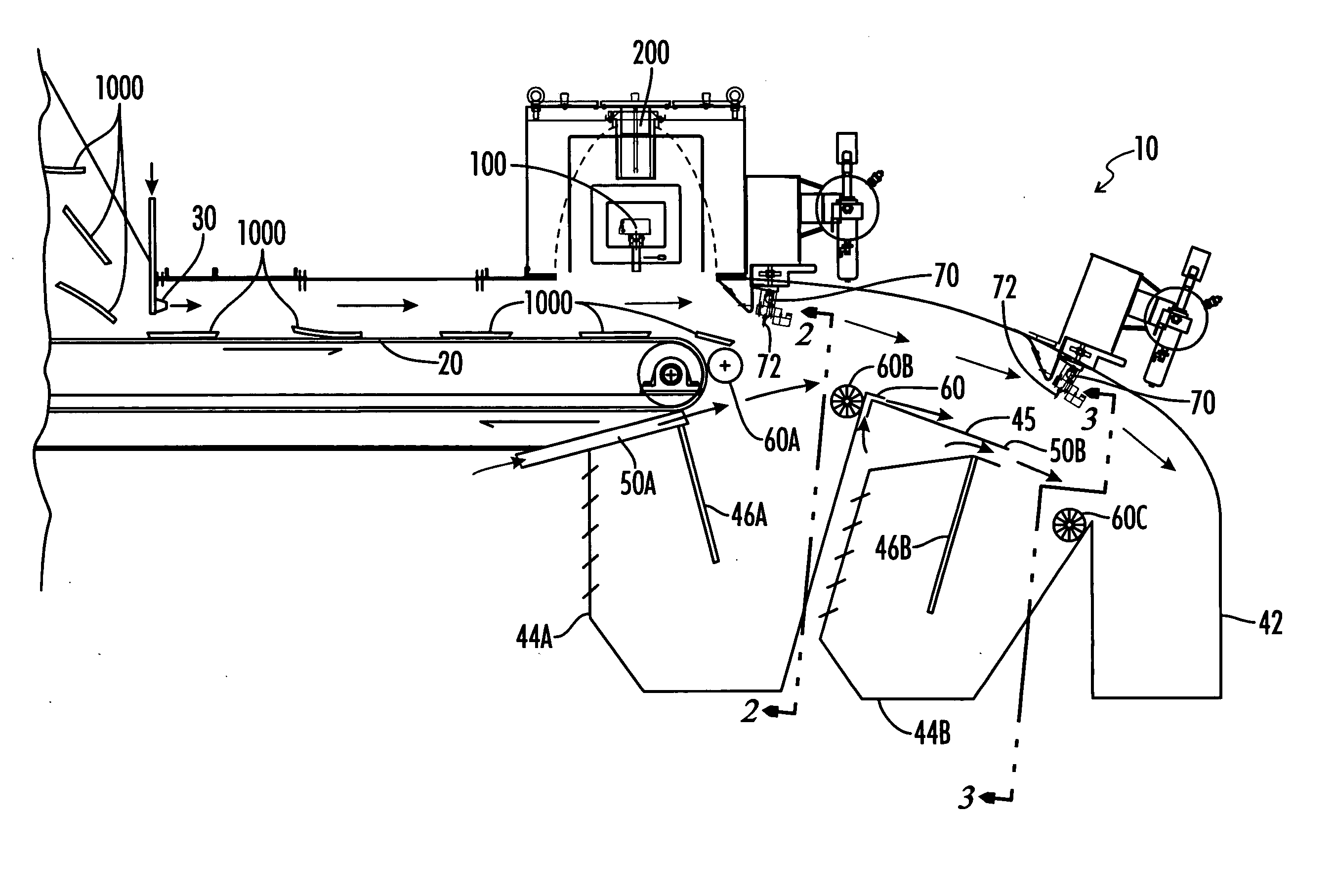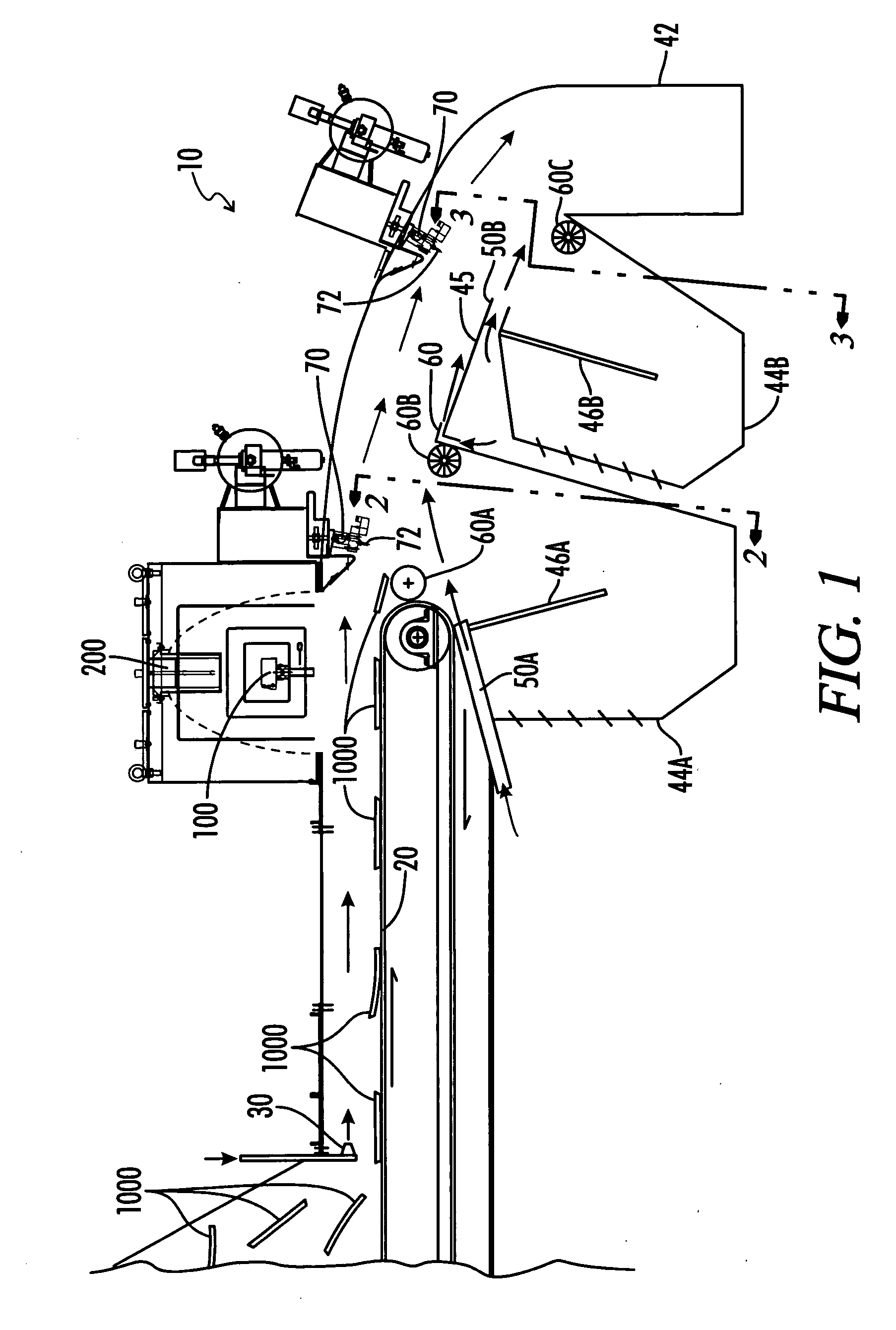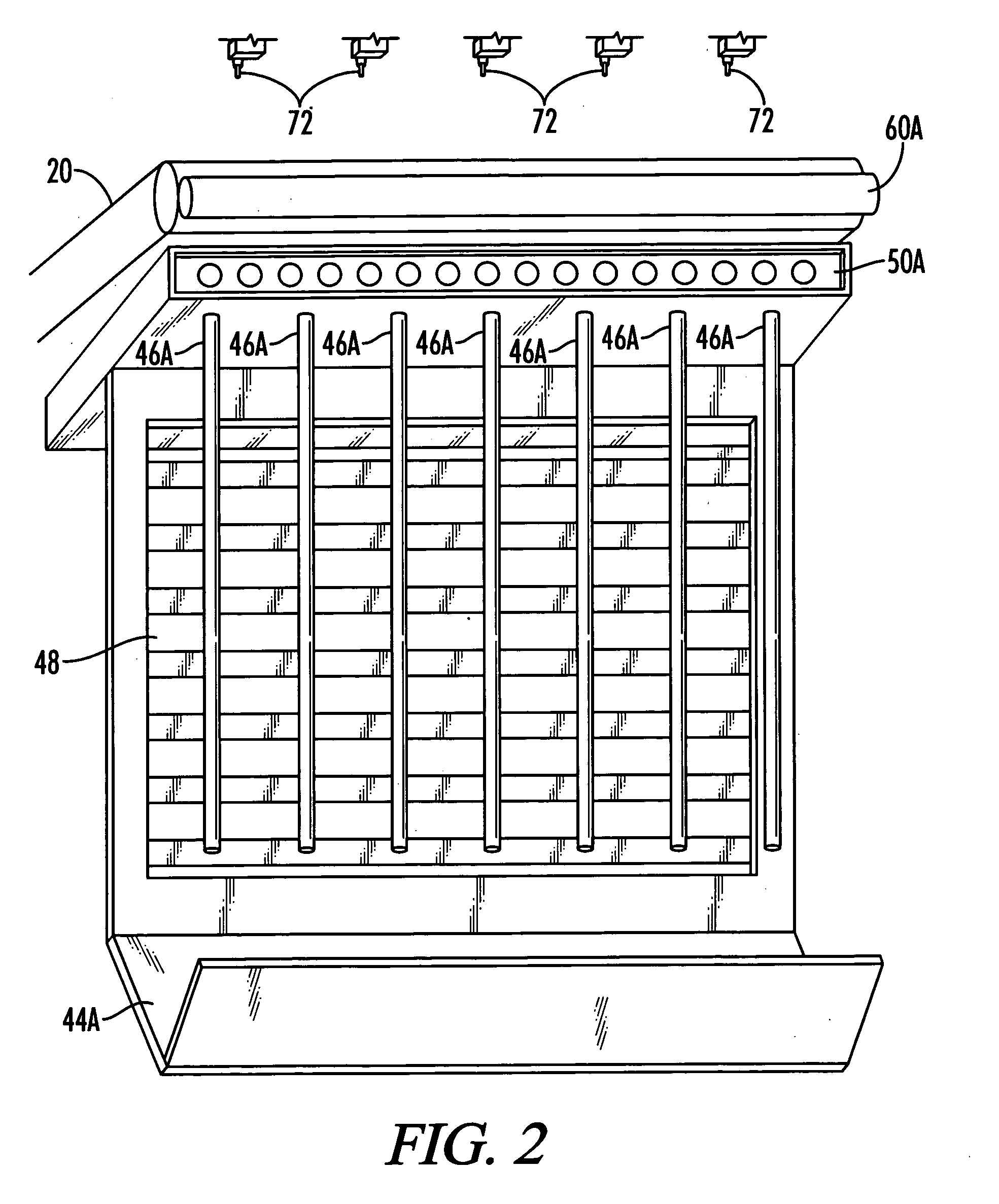Sorting System Using Narrow-Band Electromagnetic Radiation
a sorting system and electromagnetic radiation technology, applied in optical radiation measurement, instruments, spectrometry/spectrophotometry/monochromators, etc., can solve the problems of limiting reliability and throughput speed, expensive approach, etc., and achieve the effect of reducing the number of detectors
- Summary
- Abstract
- Description
- Claims
- Application Information
AI Technical Summary
Benefits of technology
Problems solved by technology
Method used
Image
Examples
Embodiment Construction
[0064] In a preferred embodiment, illustrated in FIG. 1, the present invention relates to a sorting system 10 for sorting material 1000, such as waste paper. Sorting system 10 comprises a path of travel of material 1000, defined by the travel of a conveyor 20. Material 1000 can comprise any waste material for which sorting is desired, such as plastics, glass, etc., but preferably includes paper stock, including newsprint, carrier board and the like. Conveyor 20 can comprise any conveyor used for moving material 1000 or the like, such as a roller or conveyor belt and be formed of fabric, mesh, rubber, etc. as would be familiar to the artisan. Advantageously, conveyor 20 is made of a material which provides sufficient friction to maintain material 1000 traveling the path of travel, to the extent possible. Conveyor 20 is typically driven at the desired rate of travel of material 1000 along the path of travel, as discussed in more detail hereinbelow.
[0065] Still referring to FIG. 2, so...
PUM
 Login to View More
Login to View More Abstract
Description
Claims
Application Information
 Login to View More
Login to View More - R&D
- Intellectual Property
- Life Sciences
- Materials
- Tech Scout
- Unparalleled Data Quality
- Higher Quality Content
- 60% Fewer Hallucinations
Browse by: Latest US Patents, China's latest patents, Technical Efficacy Thesaurus, Application Domain, Technology Topic, Popular Technical Reports.
© 2025 PatSnap. All rights reserved.Legal|Privacy policy|Modern Slavery Act Transparency Statement|Sitemap|About US| Contact US: help@patsnap.com



